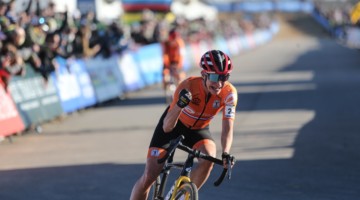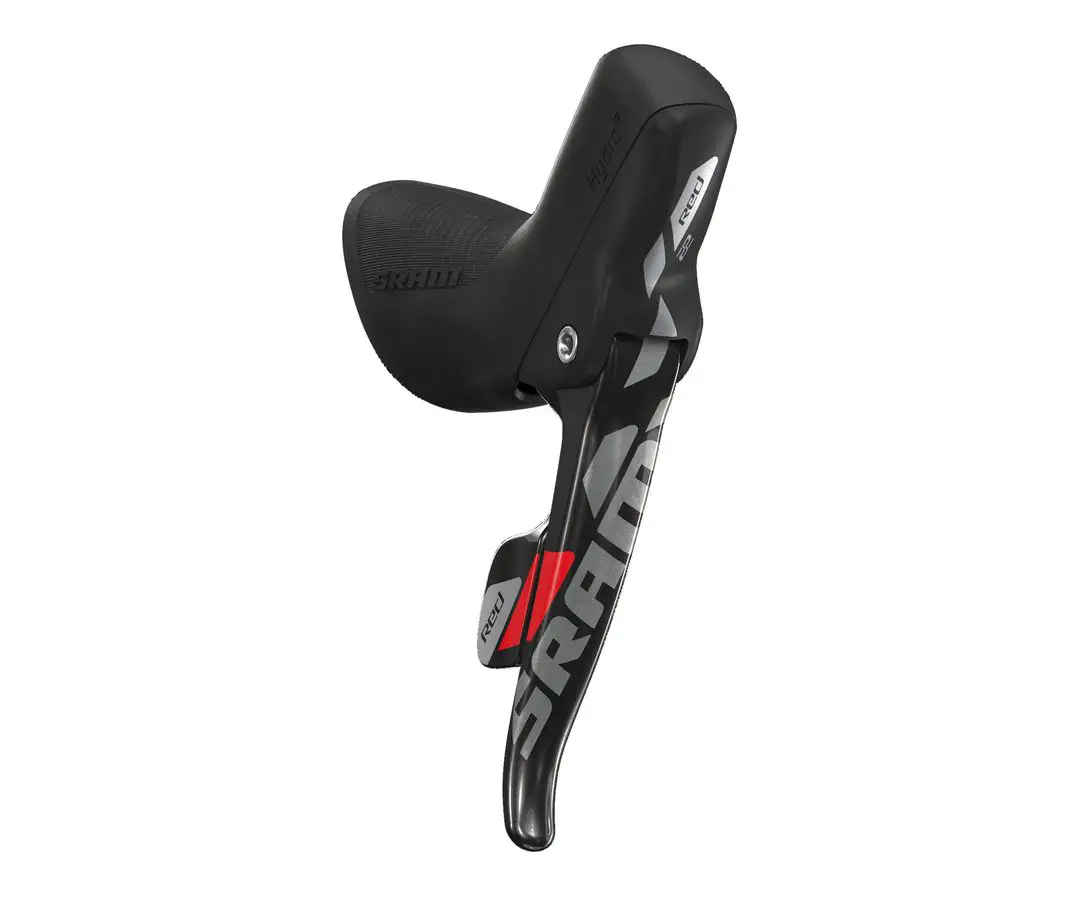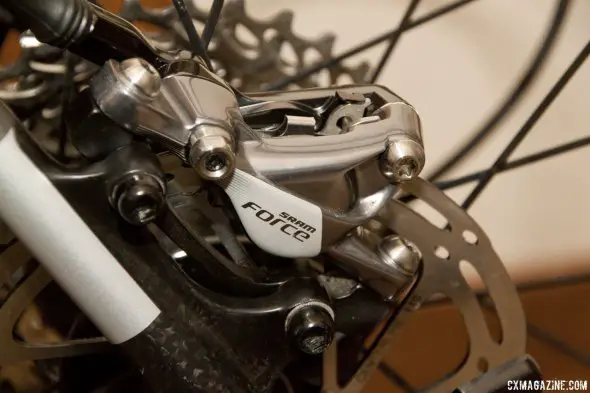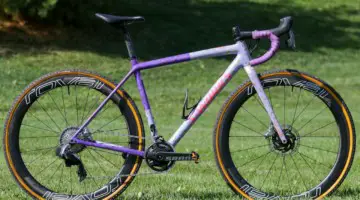After SRAM’s voluntary recall of their hydraulic brakes last December, which had been caused by failing seals in cold temperatures, the company has been working nonstop on developing a suitable replacement. After months of testing, which included rides and lab testing in extreme temperatures both hot and cold, the company is confident that it has achieved this goal. Replacement units of the recalled units have been shipping, and new consumer units are expected to be ready for purchase shortly.
On May 15, SRAM released details on the changes they made with the new hydraulic HydroR levers and HRR (hydraulic road rim) and HRD (hydraulic road disc) brake calipers, and Cyclocross Magazine had our first in-person look and ride on the new versions this week at the 2014 Summer Press Camp.
The company initially launched hydraulic braking with the RED 22 (11-speed) and S-700 (10-speed) levers, and is obviously returning with these products as recall replacements and for new model year bikes and component sales. SRAM has already published details on the new RED 22 hydraulic brakes, and has not been secretive of its intentions to bring hydraulic braking to the Force 22 line (including Force CX1). (Full pricing and weights for the SRAM RED 22, Force 22, Force CX1 and S-700 options at the bottom of this post.)
At Press Camp, we also got a first look at the RED 22, Force 22 and S-700 brakes and levers. Might we also see a Rival 22 option? If this Rival front derailleur with Yaw we saw on a 2015 Redline Conquest cyclocross bike at Sea Otter is any indication, it’s probably not far away.

The RED 22 levers offer more finger wrap around the hoods through a lower profile hood shape above the lever pivot. © Cyclocross Magazine
Visually, the calipers and levers look quite similar to the recalled units, but obviously the internals are different to adjust for the cold weather failures, and the levers have gone through quite a number of changes. The key to the redesign was a new master cylinder piston that has undergone significant cold and heat testing. SRAM boasts the new redesigned hydraulic lever and caliper system has better tolerances and seals.
There’s also a new design to the bleed port, said to offer simpler, cleaner setup and maintenance to hydraulic brakes.
At the caliper, there’s a lighter pad spring for better self-adjustment due to pad wear. The lighter spring offers more consistent rollback and contact points, since the previous (stronger) spring could push back worn pads too far.
They also claim they have found a good balance of hydraulic deadband. Brake levers feel spongy when the system has a large deadband, but minimizing deadband on disc brakes often results in the feeling that the brakes have an on/off switch (either fully engaged or not at all). Like SRAM’s Guide Brakes released in March, the new RED/Force 22/Force CX1/S-700 models are designed to eliminate the spongy feel of brake levers while still offering riders the chance to finesse the brakes with superior modulation.
The levers themselves have gone through some physical changes. The hood shape, above the brake lever, is now more sculpted and lower in profile, offering better hand wrap. The shift paddles (on the hydraulic levers only) have also been made smaller, to interfere less with thick winter gloves (and perhaps have less chance of getting caught on handlebar tape). The hood height remains the same as previous models.
The master cylinder (brake lever internals) and calipers are actually identical across all HydroR levers and HRD brakes, and the rubber hoods are also identical, making for easy mix and match. Shift internals for all 11-speed levers are also identical, while brake and shift lever materials change across the models. RED 22 features carbon shift levers and brake levers, S-700 offers aluminum shift and brake levers, while Force 22 offers an aluminum shift lever and carbon brake lever. The bolts on the RED 22 caliper are titanium for weight savings, the only real difference down there.
Click Next Page for full ride impressions, weights and pricing.













































